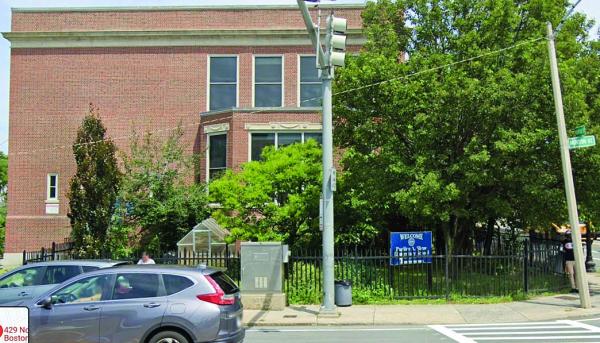March 16, 2022

When school administrators break their promises, our children and our communities lose out. Four years ago, a Boston Public Schools district official stood in the Pauline A. Shaw School’s library, which was packed to the brim with family members, students, and staff members, and announced the district’s decision to abruptly end our planned expansion to serve our kids through 5th grade. Instead, our 3rd graders would have to leave their home school and attend the Mildred Avenue K-8 School starting in 4th grade.
I was in my first year of teaching, and this public meeting was my first interaction with a BPS official, in this case one who was a stranger to our community. At the time, I did not yet understand the systemic lack of transparency and accountability to our school community, and the lack of readiness to listen to the families who would feel the most impact from this decision.
All I was able to process was the palpable grief, anger, and distrust in the library that day. The dedicated 3rd grade families in attendance pleaded to keep their children at the school they loved. They strongly questioned what had happened to the promise that had been made to them. As it turned out, there was a new plan, and their children would be denied the continuity of a K-5 school experience in their own neighborhood. The community was stunned.
When Dr. Casselius joined our School Site Council Meeting in January to address the outcry, she told us that over the last five years, BPS had lost 7,000 families. The city of Boston is ranked third – after New York City and San Francisco – in housing prices. As my colleague, BPS teacher Jennifer Dines, wrote in a recent essay for WBUR, the rapid and dramatic rise in housing costs in Boston has had a disproportionate impact on Black and Latinx families in our city. Evictions during the pandemic have been highest in our school’s Mattapan neighborhood as well as in Dorchester, Roxbury, and Hyde Park.
This affordable housing crisis, coupled with the district’s decision to halt the P.A. Shaw’s expansion to 5th grade, has led to a 30 percent drop in enrollment at our school since 2018. Wanting to ensure educational continuity for their kids and to keep siblings together, families have left the Shaw for secure spots in schools with larger grade spans.
Declining enrollment has had a direct impact on the quality of education at our school. In BPS, our weighted student funding model means that when a school experiences declining enrollment, its budget suffers. Over the last four years, we have lost our Science program, our Music program, and we are now slated to lose our first homeroom class.
In her brilliant comments at the most recent School Committee Meeting, member Lorena Lopera said, “The decisions we make today need to be working toward a vision. The community needs to be a part of creating that vision, and they need to not have anxiety about what the school will look like a year from now, two years from now, three years from now.”
A full 98 percent of our school community consists of students and families of color. We serve more Black families than any other Boston school that has been granted an expansion to 6th grade. We have a community-driven, community-built vision for our school. We want to turn our closing 3rd grade classroom into a 4th grade classroom for next school year. We want to phase into a K-6 school to fit the district’s vision for elementary schools. At P.A. Shaw, we want the full inclusion model that our students deserve, and that the district promotes.
We can no longer let systemic failures and external forces dictate the fate of thriving school communities like ours. The district must make the decision to repair the harm they have caused through broken promises by investing in our community school. This means budgeting for a long-term plan that will give families legitimate reason to stay. This is the only way to earn back the trust that the Boston Public Schools need to survive.
The question on the minds of parents and educators at P.A. Shaw is: Will BPS listen to and invest in our community? Or will the Shaw become yet another example of a school serving a majority of Black and Brown students being closed due to historic disinvestment?
Tracy Curtin teaches at the Pauline A. Shaw School.


